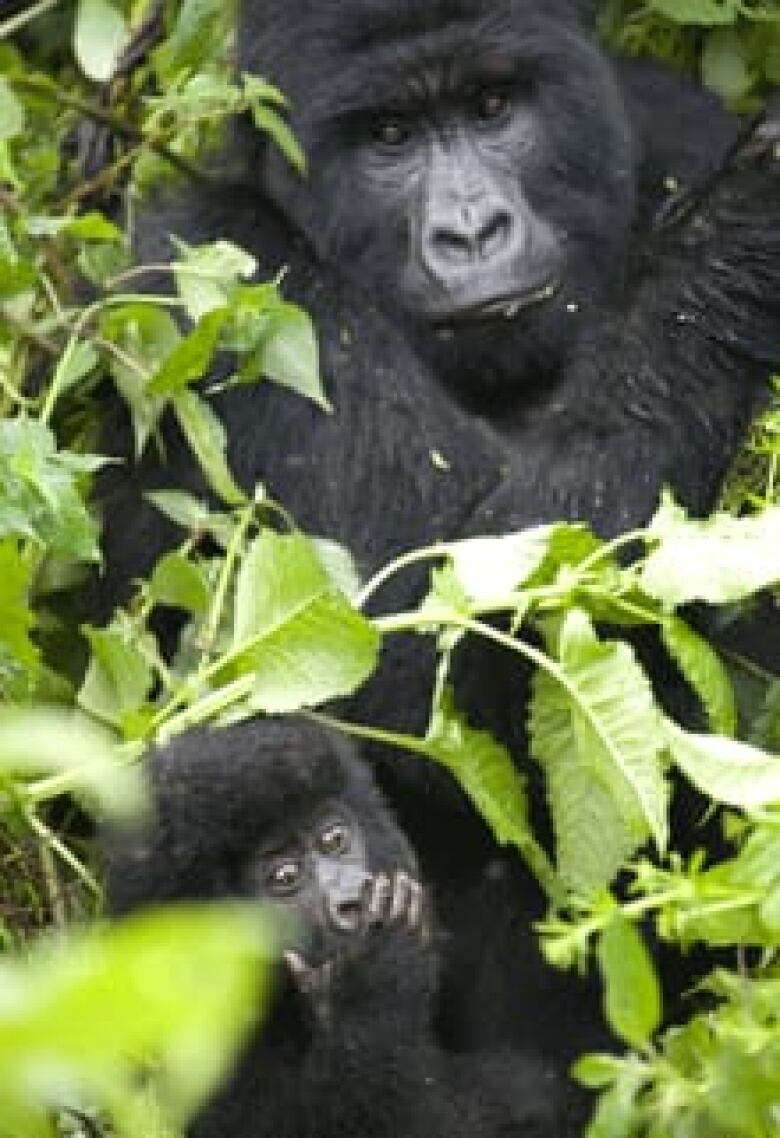7 eco-tourism sites under threat
The federal government'sapprovalof a Glacier Discovery Walk in Jasper National Park has raised concerns about the impact increased tourism will have on the Columbia Icefield specifically, onthe Athabasca Glacier, which will be the walk's main attraction.
The glacier is already the most visited glacier in North America and has beenreceding at an accelerated pace because of global warming.
Many other natural sites around the world are under threat from a combination of development,tourism and climate change. We take a look at some of them.
Galapagos Islands, Ecuador
The site of some of Charles Darwin's most pivotal discoveries of evolution, this archipelago of volcanicislands in the Pacific Ocean off the coast of Ecuador is known for its rich biodiversity.Hundreds ofspecies of plant and animallife found on the islandsdo not exist anywhere else, but these are under threat from the more than 150,000 visitors a year who come to the islands as well as from invasive species that have been introduced to the islandsover the years.
Everglades National Park, Florida
Thissubtropical wetland at the southern tip of Floridais beloved for its impressive mangrove forests and diverse plant and animal life. The park has been damaged by residential development and poorly regulated tourism.
Great Barrier Reef, Australia

The 2,000-kilometre reef off the coast of Queensland state is the world's largest and is home tohundreds of species of marine life, including many types of hard and soft coral and six of the world's seven threatened species of marine turtle. The reef faces threats from fishing, pollution especially from the pesticides, fertilizers, sediment and other agricultural and mining run-off that washes up on the reef via the river systems that drain into the ocean rising sea temperatures, which are exacerbating the bleaching of coral, andthe shale oil industry. Tourist activities such as snorkeling and diving are not considered as big a threat to the reef as the other activities.
Dead Sea
The mineral-rich waters of the Dead Sea, which lies between Israel and Jordan,draw international tourists who float easily in water that is10 times as salty as seawater. Thelake which has a surface 417 metresbelow sea level and isthe lowest place on earth and the many hotels andresorts that dot its shorelines generate millions of dollars in tourism revenue, but it's not the tourists who pose the greatest threat to the lake. It's the increased water consumption on the rivers upstream from the Dead Sea and at the mining operations on the lake itself thathas beencausing water levels to decrease at an alarming ratein recent years. The lake, which is about 85 kilometres long and about 17 kilometres wide,is mined for potash, saltand other minerals that areused in cosmetics, fertilizers, cars and computers.
Machu Pichu, Peru
One of the most important archeological and cultural sites in Latin America,these ruins of an ancient city of the Inca empire sit 2,430metres above sea level in a tropical mountain forest in the Peruvian Andes. The much-visited UNESCO world heritage site has been flaggedas being under threat from urban development, tourism and neglect.
Virunga National Park, Democratic Republic of Congo

This 7,800-square-kilometre park, which is Africa's oldest national park, is known for its population ofmountain gorillas, whichnumber fewer than 800 in the world,and thediversity of its many kinds of habitats, whichinclude active volcanoes, mountains, icefields, savannas, swamps and steppes. The park's wildlife and habitats have been damaged by the country's protracted civil war, which among other things forced the park's rangers to flee and brought in an influx of refugeeswho poached the park's animals and cut down its forests.Poaching, habitat destructionand the felling of trees forcharcoal production continue to threaten the park, and although the civil war is officially over, park rangers are stillbeingambushed by militia fighters and poachers.
Belize Barrier Reef Reserve System
Tens of thousands of visitors a yearflock to thecoastal areathat includes a barrier reef that is thelargest in the northern hemisphere and the second largest in the world. The areaalso featuresmangrove forests, sand cays, coastal lagoons and coral islands. The reef system, which extends almost 300 kilometresfrom theBelize-Mexico border south toclose totheGuatemalan border and has been divided into seven marine reserves and national parks,is home to an impressive array of plant and marine life, including threatened species of marine turtle, manatee and the American crocodile. The influx of tourists and the associated hotels, tour operatorsand recreation industry have put great pressure on the reef system, as has over-fishing, pollution and climate change.












_(720p).jpg)


 OFFICIAL HD MUSIC VIDEO.jpg)
.jpg)



























































































